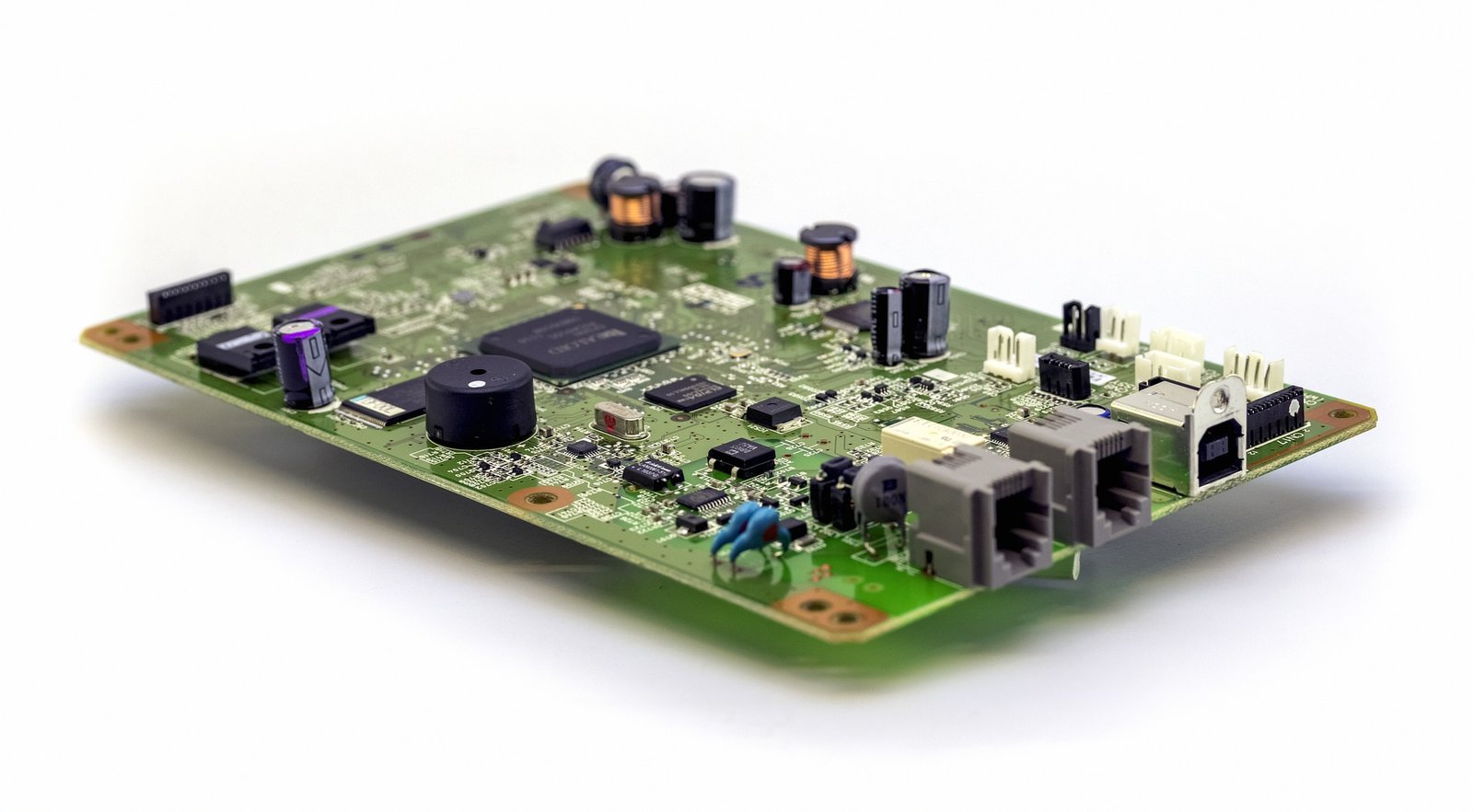Printed Circuit Boards (PCBs) are the backbone of modern electronic devices, facilitating connections between various components. One often overlooked but essential aspect of PCB design is the color of the solder mask. The solder mask color can impact not only the aesthetics but also the functionality and inspection process. This article explores seven types of PCB colors and provides tips on choosing the best one for your needs.
Green PCBs
Green is the most commonly used color for PCBs. This traditional choice is favored due to its optimal contrast against the white silkscreen, making inspection and repair processes more manageable. The industry-standard green solder mask offers excellent visibility of the PCB traces, which is crucial during manufacturing and maintenance. Additionally, green solder masks are typically cost-effective, benefiting large-scale production runs.
Red PCBs
Red PCBs are often chosen for their visual appeal and ability to highlight specific circuits. The vibrant color makes it easier to distinguish between different layers and components, facilitating more straightforward debugging and assembly. Red PCBs are popular in consumer electronics and custom projects where aesthetics are important. However, it is essential to note that red solder masks may slightly increase production costs compared to the standard green.
Blue PCBs
Blue solder masks offer a unique and professional appearance, often used in high-end consumer electronics and specialized applications. The blue color provides good contrast with the white silkscreen, aiding in the inspection and testing of the PCB. While blue PCBs are generally more expensive than green ones, they can add a premium look to the final product, enhancing brand perception and market differentiation.
Black PCBs
Black PCBs are synonymous with sophistication and high-end products. This color is commonly used in luxury electronics and devices where aesthetics are a significant factor. However, black solder masks can present challenges during inspection due to the lower contrast with the silkscreen and traces. This makes them less suitable for applications requiring frequent testing and maintenance. The cost of black PCBs is typically higher, reflecting their specialized use cases.
White PCBs
White solder masks are often used in LED applications and other products where light reflection and diffusion are critical. The white color helps to enhance the luminosity of LEDs, making it an ideal choice for lighting and display technologies. However, white PCBs can be more challenging to inspect due to the lower contrast with the silkscreen. Additionally, they may show dirt and smudges more readily, which could affect the visual appeal of the product.
Yellow PCBs
Yellow PCBs are less common but are used in applications requiring high visibility and distinction between different board sections. The bright color can aid in the identification of components and circuits, facilitating easier debugging and assembly processes. Yellow solder masks are also used in safety-critical applications where clear visibility is paramount. The cost of yellow PCBs can be higher, reflecting their specialized use.
Purple PCBs
Purple PCBs are chosen primarily for their aesthetic appeal and uniqueness. This color is often used in custom and hobbyist projects where the visual impact is a priority. Purple solder masks provide a striking appearance and can help in brand differentiation. However, like other non-standard colors, purple PCBs can be more expensive and may present challenges in inspection due to lower contrast with the silkscreen.
Tips for Choosing the Right PCB Color
Consider Functionality and Visibility
When selecting a PCB color, consider the functionality and visibility requirements of your application. Green remains the go-to choice for its excellent visibility and cost-effectiveness. For projects where aesthetics are crucial, colors like red, blue, and black offer distinct visual advantages.
Account for Cost
Different solder mask colors can impact the overall cost of PCB production. Standard colors like green are generally more affordable, while specialized colors like black and purple may incur higher costs. Balance your budget with the desired visual and functional outcomes.
Factor in the End-Use Environment
Consider the environment in which the PCB will be used. White PCBs are ideal for LED applications, while yellow PCBs are suited for safety-critical devices. Evaluate how the color choice will impact the performance and durability of the PCB in its intended environment.
Emphasize Brand and Aesthetics
For consumer-facing products, the color of the PCB can enhance brand identity and consumer appeal. Black and blue PCBs can convey a sense of luxury and sophistication, while red and purple can highlight custom or high-end applications. Choose a color that aligns with your brand’s image and market positioning.
In conclusion, the color of a PCB solder mask is more than just an aesthetic choice. It influences the inspection process, cost, and suitability for specific applications. By considering the functionality, cost, environment, and brand aesthetics, you can select the most appropriate PCB color for your project. For further insights and custom PCB design solutions, visit ArisenTec and explore our range of services tailored to meet your unique needs. ArisenTec is a leading PCBA manufacturer, specializing in high-quality PCBA manufacturing and providing end-to-end solutions including turnkey PCB assembly and PCB prototyping services. Our expertise ensures that your printed circuit board costs are minimized without compromising on quality. Whether you need automotive PCB services, or smart home PCBs, our comprehensive offerings meet all your electronic manufacturing needs.
Choosing the Right Wires for Breadboard Wiring: A Comprehensive Guide

Breadboards are a staple in electronic circuit building, offering flexibility and ease of use for both beginners and professionals. However, one of the most critical aspects of working with breadboards is selecting the right wires. The wires you choose can impact not only the functionality of your circuit but also its longevity and ease of…
How to Improve Heat Dissipation in PCB Design

Introduction As modern electronic devices become more complex and power-dense, heat dissipation has emerged as a critical factor that directly impacts device performance and reliability. Excessive junction temperatures in electronic systems can shorten the lifespan of components and lead to system failure. Thus, optimizing the PCB (Printed Circuit Board) design to improve heat dissipation is…
Manufacturing Process of Multilayer PCBs

Multilayer PCB manufacturing methods include the plated-through hole (PTH) and high-density interconnect (HDI) methods, both achieved by combining different processes to realize the circuit board structure. Currently, the most widely used method is the PTH method, which has been developed and refined over more than half a century. The PTH method is mature in terms…


